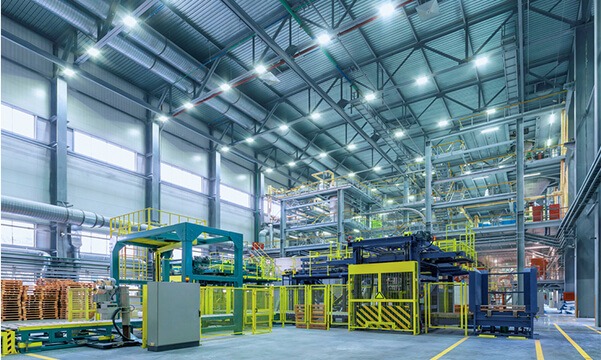Maintaining industrial lighting systems is crucial for ensuring safety, optimising energy efficiency, and prolonging the lifespan of equipment in facilities such as warehouses, factories, and manufacturing plants. Implementing a structured maintenance strategy not only enhances operational efficiency but also reduces long-term costs. Below are best practices for maintaining industrial lighting systems effectively.
1. Conduct Routine Inspections
Regular visual inspections are fundamental to identifying potential issues before they escalate. These inspections should focus on: elclampsonline.com
- Fixture Condition: Look for signs of wear, corrosion, or damage.
- Lamp Performance: Identify flickering or dimming lights that may indicate underlying problems.
- Wiring and Connections: Ensure all electrical connections are secure and free from damage.
Implementing a checklist can standardise the inspection process and ensure consistency across maintenance teams.
2. Implement Scheduled Cleaning
Dust and debris accumulation can significantly reduce light output and efficiency. Regular cleaning of fixtures, lenses, and reflectors is essential. Depending on the environment, cleaning schedules may vary:
- Monthly: In high-dust or particulate environments.
- Quarterly: In standard industrial settings.
Use appropriate cleaning agents and tools to avoid damaging sensitive components.
3. Adopt Group Relamping Strategies
Instead of replacing lamps individually as they fail, group relamping involves replacing all lamps in a system simultaneously at scheduled intervals. Benefits include:
- Reduced Labor Costs: Minimises frequent maintenance visits.
- Consistent Lighting Levels: Ensures uniform illumination across the facility.
- Predictable Maintenance Scheduling: Facilitates better planning and resource allocation.
This proactive approach can lead to improved operational efficiency and cost savings.
4. Monitor Electrical Components
Regularly inspect electrical components such as ballasts, drivers, and control systems. Key actions include:
- Testing: Verify the functionality of control systems and sensors.
- Inspection: Check for signs of overheating, corrosion, or wear.
- Replacement: Promptly replace faulty components to prevent system failures.
Maintaining these components ensures the reliability and safety of the lighting system.
5. Upgrade to Energy-Efficient Lighting
Transitioning to LED lighting systems offers numerous advantages:
- Energy Savings: LEDs consume less power compared to traditional lighting.
- Longer Lifespan: Reduced frequency of replacements and maintenance.
- Improved Light Quality: Better color rendering and uniformity.
Additionally, integrating smart controls can further enhance energy efficiency by enabling features like dimming, occupancy sensing, and daylight harvesting.
6. Establish a Preventive Maintenance Schedule
Develop a comprehensive maintenance schedule tailored to the specific needs of your facility. Consider the following intervals:
- Weekly: Visual inspections and cleaning in high-use areas.
- Monthly: Functional testing of control systems and sensors.
- Quarterly: Group relamping and detailed inspections.
- Annually: Comprehensive system audits and upgrades.
Document all maintenance activities to track performance and identify recurring issues.
7. Train Maintenance Personnel
Ensure that maintenance staff are adequately trained in the latest lighting technologies and safety protocols. Training should cover:
- Safety Procedures: Proper handling of electrical components and fixtures.
- Technical Skills: Understanding of lighting systems and control technologies.
- Regulatory Compliance: Awareness of industry standards and regulations.
Continuous education helps maintain high maintenance standards and adapts to evolving technologies.
8. Utilise Monitoring and Control Systems
Implementing advanced monitoring systems can provide real-time data on lighting performance. Benefits include:
- Early Detection: Identify issues before they lead to failures.
- Energy Management: Optimise energy usage through data analysis.
- Maintenance Planning: Schedule maintenance based on actual usage and performance metrics.
Leveraging technology enhances the efficiency and effectiveness of maintenance programs.
9. Ensure Compliance with Standards
Adhere to relevant industry standards and regulations to ensure safety and performance. Key standards include:
- NFPA 70B: Guidelines for electrical equipment maintenance.
- IES Standards: Recommendations for lighting design and maintenance.
Regular audits and compliance checks help maintain adherence to these standards.
10. Plan for System Upgrades
Stay informed about advancements in lighting technology and plan for periodic system upgrades. Considerations include:
- Technological Advancements: Adopting new lighting solutions that offer improved efficiency.
- Facility Changes: Adjusting lighting systems to accommodate changes in facility layout or usage.
- Regulatory Updates: Ensuring compliance with new regulations or standards.
Proactive planning ensures that the lighting system continues to meet the evolving needs of the facility.
By implementing these best practices, industrial facilities can enhance the performance and longevity of their lighting systems, leading to improved safety, energy efficiency, and cost savings. To know more about please visit our website – https://www.elclampsonline.com/
